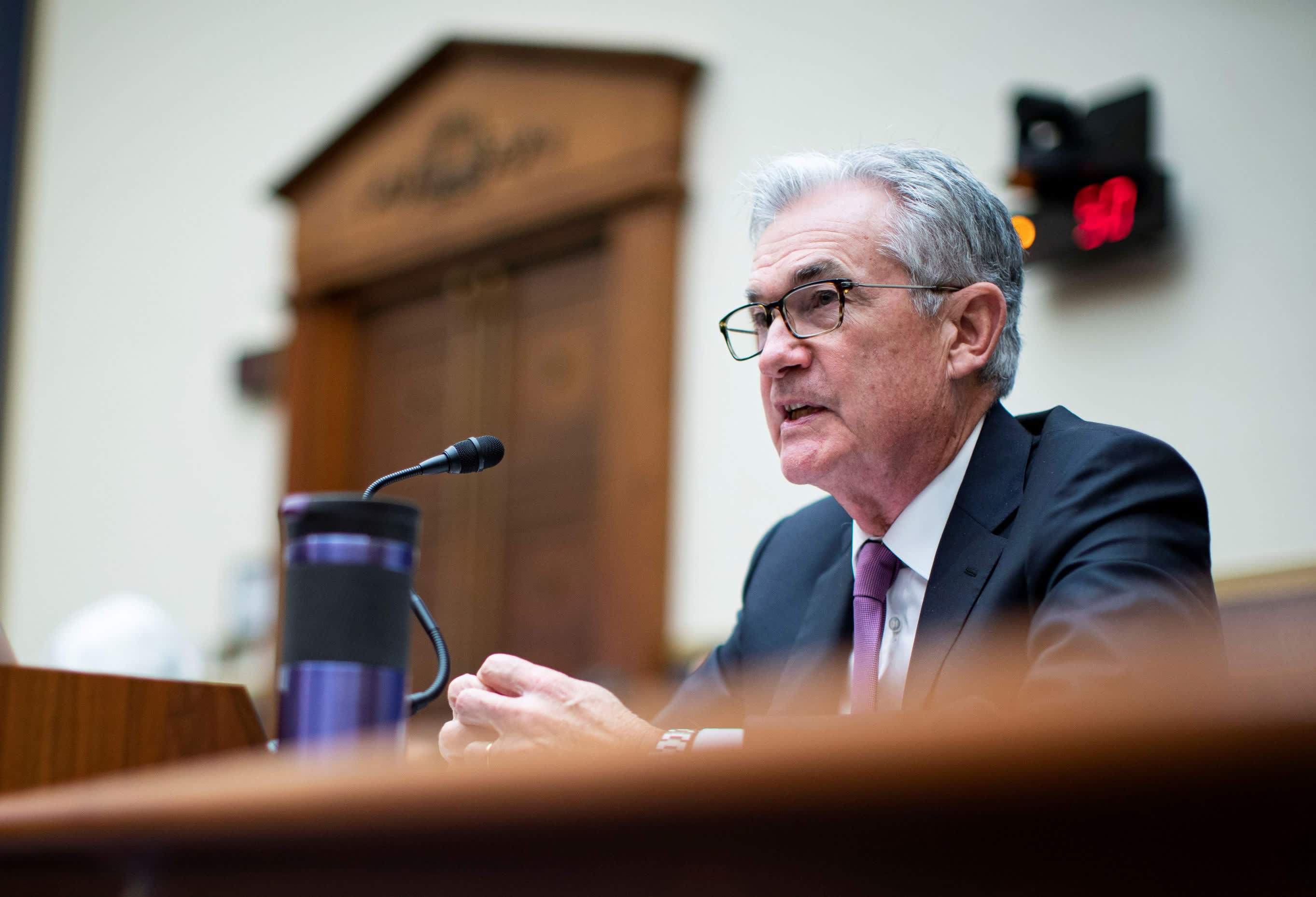- The Federal Reserve could begin reducing the pace of its monthly asset purchases as soon as mid-November, according to minutes from the September meeting,
- The summary, released Wednesday, indicated the tapering process could see a monthly reduction of $10 billion in Treasurys and $5 billion in mortgage-backed securities.
- Officials at the meeting expressed concern about inflation, saying it could last longer “than they currently assumed.”
Federal Reserve officials could begin reducing the extraordinary help they've been providing to the economy by as soon as mid-November, according to minutes from the central bank's September meeting released Wednesday.
The meeting summary indicated members feel the Fed has come close to reaching its economic goals and soon could begin normalizing policy by reducing the pace of its monthly asset purchases.
The Fed next meets Nov. 2-3. Starting the tapering process in November is on the aggressive side of market expectations.
Stock picks and investing trends from CNBC Pro:
Five stocks Goldman believes will beat the Street and rally this earnings season
Global bank picks stock 'winners' to play the energy crisis
BlackRock's Larry Fink sees 'higher highs' in stocks after we get through some issues
"That would be pretty aggressive," she said. "There must be some outspoken people who are pretty concerned that they need to move even faster."
St. Louis Fed President James Bullard is one such member, telling CNBC on Tuesday that he thinks tapering should be more aggressive in case the Fed needs to rate interest rates next year to combat persistent inflation.
At the September policymaking session, the committee voted unanimously to hold the central bank's benchmark short-term borrowing rate at zero to 0.25%.
The committee also released the summary of its economic expectations, including projections for GDP growth, inflation and unemployment. Members scaled back their GDP estimates for this year but upped their outlook for inflation, and indicated they expect unemployment to be lower than earlier estimates.
In the "dot plot" of individual members' expectations for interest rates, the committee indicated it could begin raising interest rates as soon as 2022. Markets currently are pricing in the first rate hike for next September, according to the CME FedWatch tool. Following the release of the minutes, traders increased the likelihood of a September hike to 65% from 62%.
Officials, though, stressed that a tapering decision should not be seen as implying pending interest rate hikes.
However, some members at the meeting showed concern that current inflation pressures might last longer than they had anticipated. Traders are pricing in a 46% chance of two rate hikes in 2022.
"Most participants saw inflation risks as weighted to the upside because of concerns that supply disruptions and labor shortages might last longer and might have larger or more persistent effects on prices and wages than they currently assumed," the minutes stated.
The document noted that "a few participants" said there could be some "downside risks" for inflation as long-standing factors that have kept prices in check come back into play. The majority of Fed officials have been holding to theme that the current price increases are transitory and due to supply chain bottlenecks, and other factors likely to subside.
Inflation pressures have continued, though, with a reading Wednesday showing that consumer prices are up 5.4% over the past year, the fastest pace in decades.
Become a smarter investor with CNBC Pro.
Get stock picks, analyst calls, exclusive interviews and access to CNBC TV.
Sign up to start a free trial today.
-
 I was Lyft's former head of PR. I'm really not surprised by their earnings blunder.
I was Lyft's former head of PR. I'm really not surprised by their earnings blunder."It's amazing that something like this doesn't happen much more often," writes Will Valentine, Lyft's former head of communications and PR, of the company's earnings typo.
10 months ago -
 I quit my $400,000 Morgan Stanley job to become a startup founder. Loneliness was the biggest challenge, but I don't regret it.
I quit my $400,000 Morgan Stanley job to become a startup founder. Loneliness was the biggest challenge, but I don't regret it.An investment banker lost meaning in his work, so he quit. Now he runs a platform for body doubling and is much more fulfilled.
10 months ago -
 It looks like Elon Musk is a bit envious of Mark Zuckerberg's control over Meta
It looks like Elon Musk is a bit envious of Mark Zuckerberg's control over MetaElon Musk found another reason to gripe at Marc Zuckerberg — and this time, it's about the structure that gives Zuckerberg a chunk of control at Meta.
10 months ago -
 US banks have loaned $1 trillion to less regulated 'shadow banks'
US banks have loaned $1 trillion to less regulated 'shadow banks'Debt flowing to non-depository financial entities reached $1.0024 trillion last month, representing a roughly 12.16% surge from 2023.
10 months ago -
 Sam Altman wants Washington's backing for his $7 trillion AI chip venture
Sam Altman wants Washington's backing for his $7 trillion AI chip ventureSam Altman is trying to get US backing for his trillion-dollar AI chip venture to avoid national security and antitrust concerns, Bloomberg reported.
10 months ago -
 Lawmakers are trying to keep meatpacking giant JBS from trading on NYSE, citing links to deforestation
Lawmakers are trying to keep meatpacking giant JBS from trading on NYSE, citing links to deforestationA bipartisan group of lawmakers, along with environmental groups, say they fear more environmental harm if JBS gains access to additional capital.
10 months ago








